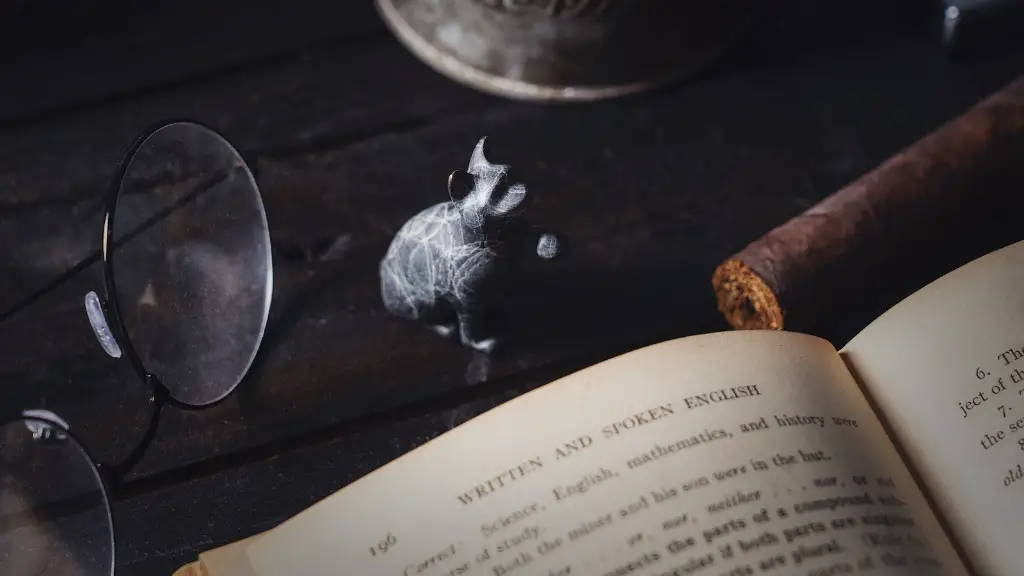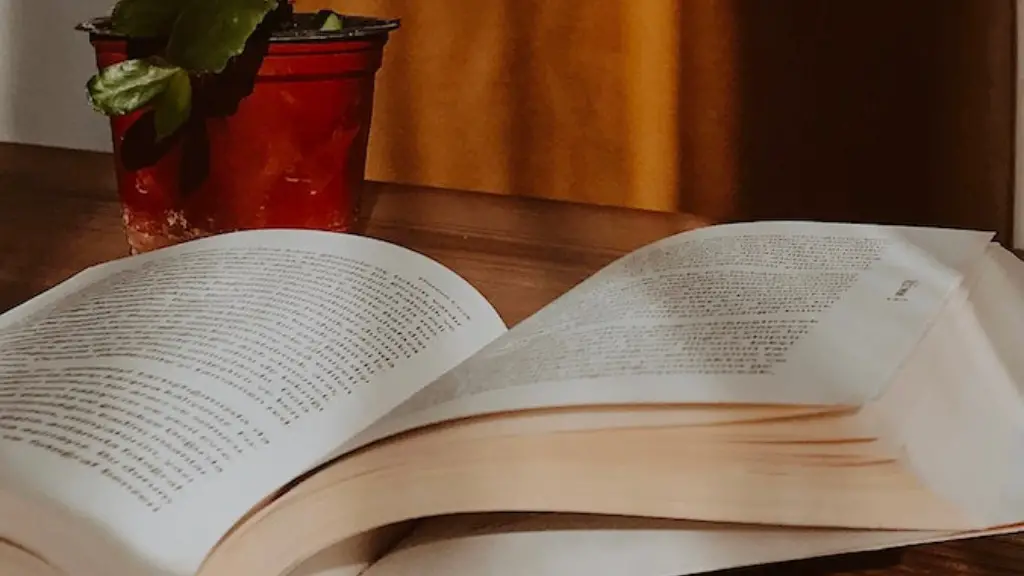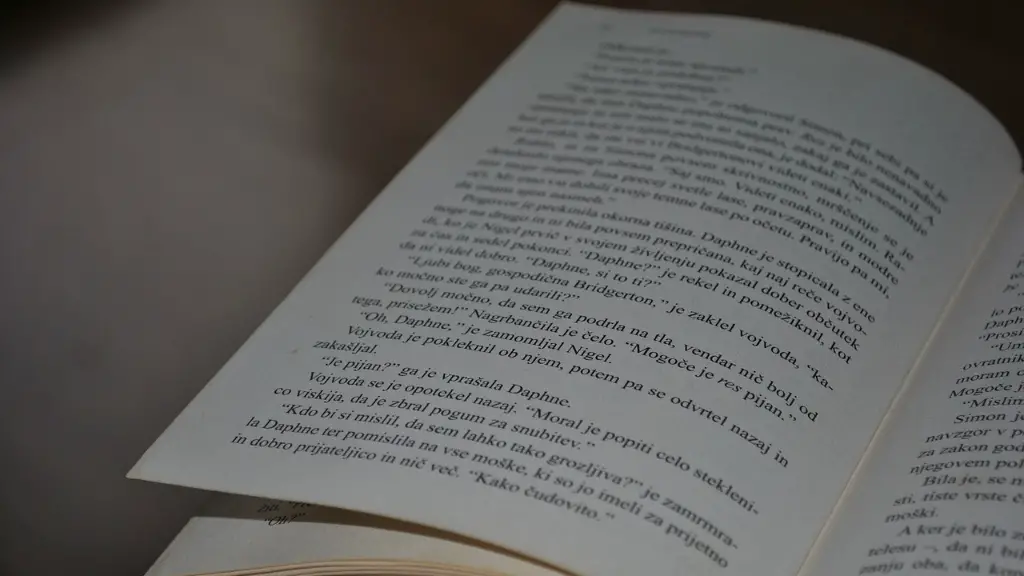An understatement in poetry is a powerful tool for a poet to illustrate deep or intense emotion without becoming overly explicit. This form of poetic expression is known for being subtle and evocative, relying on a few carefully chosen words to create an effect. By understating their emotions, poets can create a deep, contemplative atmosphere and capture a powerful effect. And while understatement is not a popular poetic form, it can have a huge impact on readers if used properly.
At its core, an understatement in poetry is a comparison that downplays the emotion the poet wants to convey. For example, imagine a youth who is deeply in love with a person they can never be with. The poet may downplay the intensity of their feelings by comparing it to something that falls short of the grandiose emotion: maybe a “small flame” as opposed to a roaring bonfire. It’s also possible to set a scene in which the characters are doing something that is modest, like holding hands under a veil of stars, even when it implies a greater emotion.
The poet isn’t just making an analogy between a flame and their emotion; they’re also showing a disconnect between what’s in the poem and what’s really being expressed. By using understatement and using understatement to show the dichotomy between what is shown and what is actually felt, the poet can create a powerful effect in the reader.
Understatements are often used to deliver a punch line. A good example of this use is found in Robert Frost’s poem “The Road Not Taken”. In the poem, Frost implies that his decision to take the road less traveled has led to a life of great meaning and purpose, only to conclude that “that has made all the difference”. This is a powerful understatement that conveys the profound impact his decision had on his life even though Frost doesn’t explain why it was significant.
Understatements can also be used in juxtaposition with grandiose statements. For example, in Ernest Hemingway’s novel “The Old Man and the Sea”, he juxtaposes the protagonist’s grandiose, heroic attempt to catch a marlin against the relatively small size of the fish he actually catches. By using understatement, Hemingway creates a contrast between what the protagonist is attempting and what he actually achieves, which enables the reader to feel the protagonist’s disappointment more viscerally.
The power of an understatement in poetry lies in its ability to convey emotion without conveying it explicitly. By understating their feelings, poets can create a contemplative atmosphere and may induce an emotional response in the reader. However, poets must be careful when using understatement; if used improperly, it can come off as too detached and lead to a confusion or disconnect between the poet and the reader.
Contrasts Highlighting
Poets often use understatement in conjunction with contrast. By juxtaposing dramatic imagery with the understated emotion in the poem, the poet can create a sense of hierarchy that helps the reader understand the emotion without becoming overwhelmed by it. Many poets use this technique to explore the differences and similarities between what is visible and what lies beneath the surface.
For instance, in W. B. Yeats’ poem “The Lake Isle of Innisfree”, he contrasts the vastness of the lake and the peacefulness of Innisfree with his own small and anxious heart. The contrast between the grandness of the scene and the speaker’s small emotions creates an evocative atmosphere that allows the speaker to explore the contrast between what he sees and what he feels.
In other cases, the contrast between the grandness of the imagery and the subtle emotion the poet wishes to evoke can help the reader to understand the depth of emotion the poet is trying to communicate. In Robert Lowell’s “Skunk Hour”, he contrasts the grandness of an evening sky with his own immobility. This contrast helps the reader to understand the sense of paralysis the speaker is feeling without being explicitly stated.
Repetition for Reinforcement
Repetition is another key technique poets use when writing with understatement. By repeating certain words or phrases, the poet can reinforce their point by emphasizing how their understated emotion is overlaid on top of the grand imagery. For example, in T. S. Eliot’s “The Love Song of J. Alfred Prufrock”, he repeats the phrase “I have measured out my life in coffee spoons” throughout the poem. In this way, he emphasizes how mundane and insignificant his life is in contrast to the grandness of the physical world he is describing.
In addition to repetition, poets often use allusion to reinforce their point. By alluding to a specific event or person, the poet can imply something greater than what is being said. In “The Waste Land”, T. S. Eliot alludes to the biblical story of Lot’s wife. When Lot’s wife was told not to look back on the destruction of Sodom and Gomorrah, she disobeyed and was turned into a pillar of salt. By alluding to this story, Eliot is implying that his unnamed speaker is struggling with his own anxiety and pain.
Using Metaphors to Broaden Outlook
Metaphors are another way poets use understatement in poetry. By comparing an emotion to something mundane, the poet can allow the reader to see the emotion in a broader context. For instance, in John Milton’s “Lycidas”, he compares mourning to the darkness of night. By using this metaphor, Milton is allowing the reader to see the emotion of mourning as something larger than just sadness; it is an oppressive force that stretches across the entire landscape.
In his poem “The Second Coming”, W. B. Yeats uses a metaphor to compare the world’s chaos to a “widening gyre.” By using a metaphor, Yeats is allowing the reader to see the chaos of the world as something that is ever-expanding and uncontrollable.
Metaphors are often used in conjunction with other poetic devices. In Gerard Manley Hopkins’ “Spring and Fall”, he juxtaposes the imagery of a falling leaf with the speaker’s own sadness and grief. By using a metaphor and juxtaposing it with an emotion, Hopkins is allowing the reader to gain a deeper understanding of the speaker’s grief.
Affecting Tone and Pitch
The use of understatement in poetry can also affect a poem’s overarching tone and pitch. By downplaying certain emotions or events, the poet can create a sense of detachment or disinterest even when intense emotions are being expressed. This can add a layer of self-deprecation to the poem or heighten the emotional impact of the poem.
For instance, in Maureen Morehead’s “Struggle”, she downplays what could be a very intense confrontation by describing it as a “small tussle”. The downplay of the intensity of the situation allows the reader to focus on the underlying themes of the poem rather than getting caught up in the drama of the confrontation.
Understatements can also be used to downplay the importance of events that could otherwise be seen as grandiose. In Edna St. Vincent Millay’s “The Morrow”, she downplays the importance of the sunrise by describing it as “the little sunrise at the end of the world”. By downplaying the event in this way, Millay gives her readers a new perspective on the overwhelming beauty of the morning sky.
Essence of Life
Understatements in poetry can also be used to emphasize the essence of life. By downplaying the grandiosity of humanity and its achievements, poets can bring attention to the small yet profound moments that make up a life. In “The Starfish” by Robert Frost, he contrasts the grandness of the fishermen’s net with the small starfish he finds on the beach. By drawing attention to the small starfish, Frost is emphasizing how the small moments of life are crucial to creating a meaningful existence.
In “Anecdote of the Jar”, Wallace Stevens downplays humanity’s attempts at shaping the wilderness. He describes the jar as simply “reversing” nature instead of dominating it, which brings attention to the inevitability of change and the need for humanity to accept it.
In “To an Afflicted Poet”, Emily Dickinson downplays her own deep depression as “a smaller chill”. By using understatement to downplay the significance of her own despair, Dickinson is emphasizing how depression is only a small part of the human experience.
The Power of Subtlety
At its core, the purpose of understatement in poetry is to illustrate a deep emotion without getting overly explicit. By understating their feelings, poets can create a contemplative atmosphere and bring attention to the small yet profound moments that make up our lives. Through understatement, poets can add an extra layer of complexity to their poems by emphasizing the contrast between what is said and what is implied.
Furthermore, poets can use other poetic devices such as repetition, metaphors, and allusions to reinforce their point. By combining these devices with understatement, poets can create powerful pieces of poetry that evoke a deep emotional response in the reader.
The power of understatement in poetry lies in its ability to convey emotion in subtle yet profound ways. By finding the right words, poets can create an atmosphere that allows the reader to experience the emotion without getting overwhelmed.





